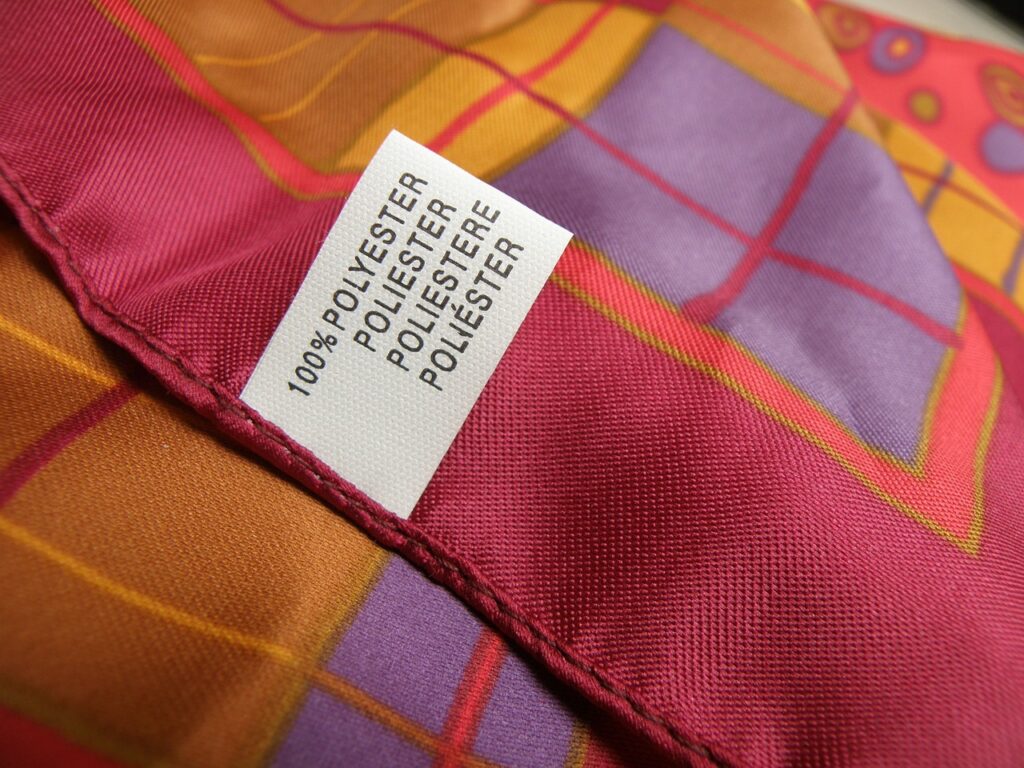Polyester Clothing: Production, Quality, and Environmental Impact
Polyester is one of the most widely used synthetic fabrics in the fashion industry today. Known for its affordability, durability, and ease of maintenance, polyester clothing is found in many wardrobes around the world. However, while polyester offers certain practical benefits, its production and use have significant environmental consequences, particularly due to the release of microplastics during washing. This article will explore the production of polyester clothing, its quality, and the environmental impact associated with microplastics in our water and food chain.
What Is Polyester and How Is It Made?
Polyester is a synthetic fiber made from petroleum-based products. The most common type of polyester used in clothing production is polyethylene terephthalate (PET), which is created through a chemical process involving terephthalic acid and ethylene glycol. This process results in the formation of long polymer chains that are spun into fibers. These fibers are then woven or knitted into fabric, which is used to create a wide range of clothing items, from shirts and pants to jackets and athletic wear.
Polyester is popular in the fashion industry due to its low cost and the versatile properties it offers. It is strong, resistant to shrinking, and dries quickly, making it particularly suitable for activewear and everyday clothing. Polyester can also be blended with natural fibers like cotton, which improves the overall texture and durability of the fabric.

Quality of Polyester Clothing
While polyester clothing is durable and resistant to wrinkles, it is not without its drawbacks. One of the main complaints about polyester is its breathability. Unlike natural fabrics such as cotton or linen, polyester does not absorb moisture well, making it less suitable for hot or humid weather. This can lead to discomfort, as the fabric traps sweat and prevents the skin from cooling down properly.
Another downside is the tendency for polyester to trap odors, which can make garments smell unpleasant over time. This is because polyester fibers do not allow the fabric to “breathe” as natural fibers do, causing moisture and bacteria to accumulate. Additionally, polyester is not biodegradable, meaning it does not break down naturally in the environment. When polyester clothing is discarded, it can remain in landfills for hundreds of years, contributing to the growing issue of textile waste.
Polyester Clothing and the Environmental Impact of Microplastics
One of the most pressing environmental concerns related to polyester clothing is the shedding of microplastics during washing. When garments made from synthetic fibers like polyester are laundered, tiny fibers break off and are flushed into the water system. These fibers, which are often too small to be filtered out by wastewater treatment plants, make their way into rivers, lakes, and oceans.
Once in the water, microplastics are ingested by marine animals, such as fish, seabirds, and other wildlife. Many creatures mistake the tiny plastic particles for food, leading to the accumulation of plastic in their digestive systems. This can cause harm to the animals, including internal injury, reduced reproductive success, and even death. Furthermore, the microplastics can enter the food chain, eventually making their way to humans who consume contaminated seafood.
Studies have shown that microplastics can also be found in other sources of water, including tap water and bottled water. As these particles are incredibly small, they can easily pass through filtration systems, making them difficult to remove. As a result, there are growing concerns about the potential health risks associated with microplastic exposure, including chemical contamination and potential disruptions to human hormonal and immune systems.

Reducing the Impact of Polyester
While polyester has many benefits in terms of cost and functionality, its environmental impact cannot be ignored. To help mitigate the harm caused by polyester clothing, there are several steps consumers can take:
- Choose natural or recycled fibers: Opting for clothes made from natural fibers such as cotton, linen, or wool, or choosing polyester garments made from recycled plastic, can help reduce the environmental footprint of our clothing. Recycled polyester uses less energy and resources than virgin polyester and reduces the demand for new plastic production.
- Use microfiber filters: Special filters can be added to washing machines to capture microplastics released during laundry. These filters help prevent plastic fibers from entering the water system, reducing the amount of microplastics that reach the environment.
- Wash clothes less frequently: Reducing the frequency of washing polyester garments can help minimize the release of microplastics. Additionally, washing clothes at lower temperatures and avoiding tumble drying can help extend the life of the fabric and reduce fiber shedding.
- Support sustainable brands: Many clothing brands are now focusing on sustainability and ethical production practices. Supporting these brands can help drive demand for more eco-friendly materials and manufacturing processes.
Polyester clothing is a staple in modern fashion due to its low cost, durability, and versatility. However, its environmental impact, particularly through the release of microplastics during washing, is a growing concern. These tiny plastic fibers pollute our water, harm wildlife, and ultimately enter the human food chain. While there is no simple solution, choosing natural or recycled fabrics, using microfiber filters, and supporting sustainable fashion practices can help reduce the harmful effects of polyester on our planet. As consumers become more aware of these issues, the hope is that the fashion industry will continue to evolve toward more sustainable and environmentally friendly alternatives.

